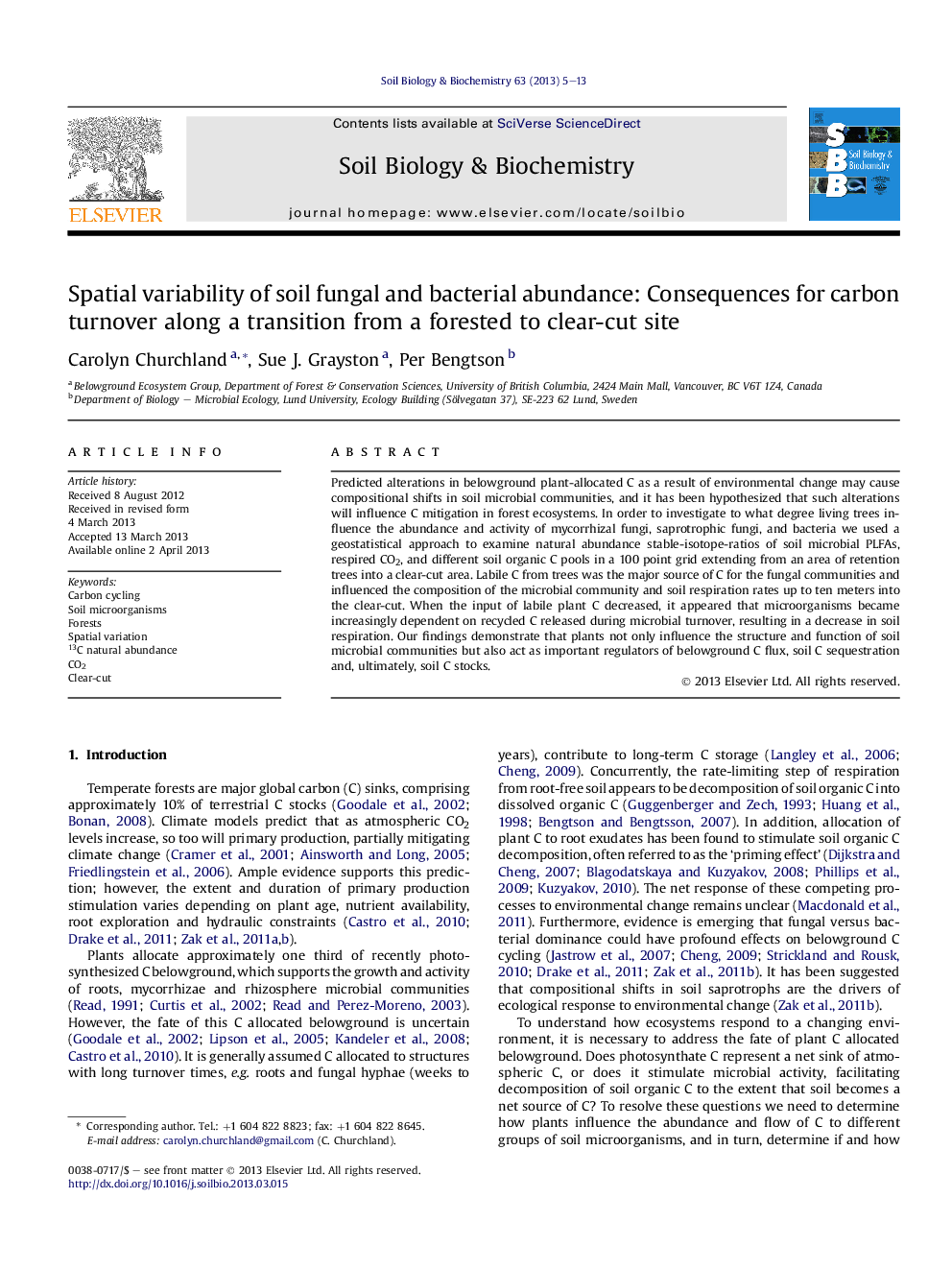| کد مقاله | کد نشریه | سال انتشار | مقاله انگلیسی | نسخه تمام متن |
|---|---|---|---|---|
| 2024801 | 1542621 | 2013 | 9 صفحه PDF | دانلود رایگان |

• We measured 12C/13C to infer C-flow from trees into soil microbes and soil C pools.
• Large trees provide labile C to the microbial community up to 10 m into a clear-cut.
• The microbial community becomes dominated by bacteria 5–10 m into the clear-cut.
• As distance from trees increases, fungi and bacteria become more 13C-enriched.
• 13C-enriched bacteria in the clear-cut are likely recycling C during turnover.
Predicted alterations in belowground plant-allocated C as a result of environmental change may cause compositional shifts in soil microbial communities, and it has been hypothesized that such alterations will influence C mitigation in forest ecosystems. In order to investigate to what degree living trees influence the abundance and activity of mycorrhizal fungi, saprotrophic fungi, and bacteria we used a geostatistical approach to examine natural abundance stable-isotope-ratios of soil microbial PLFAs, respired CO2, and different soil organic C pools in a 100 point grid extending from an area of retention trees into a clear-cut area. Labile C from trees was the major source of C for the fungal communities and influenced the composition of the microbial community and soil respiration rates up to ten meters into the clear-cut. When the input of labile plant C decreased, it appeared that microorganisms became increasingly dependent on recycled C released during microbial turnover, resulting in a decrease in soil respiration. Our findings demonstrate that plants not only influence the structure and function of soil microbial communities but also act as important regulators of belowground C flux, soil C sequestration and, ultimately, soil C stocks.
Journal: Soil Biology and Biochemistry - Volume 63, August 2013, Pages 5–13